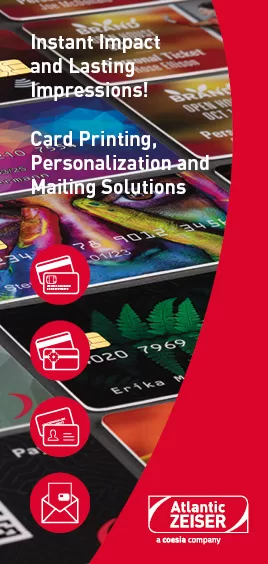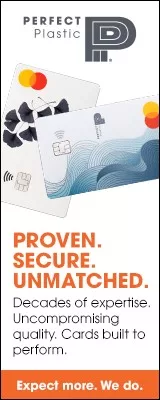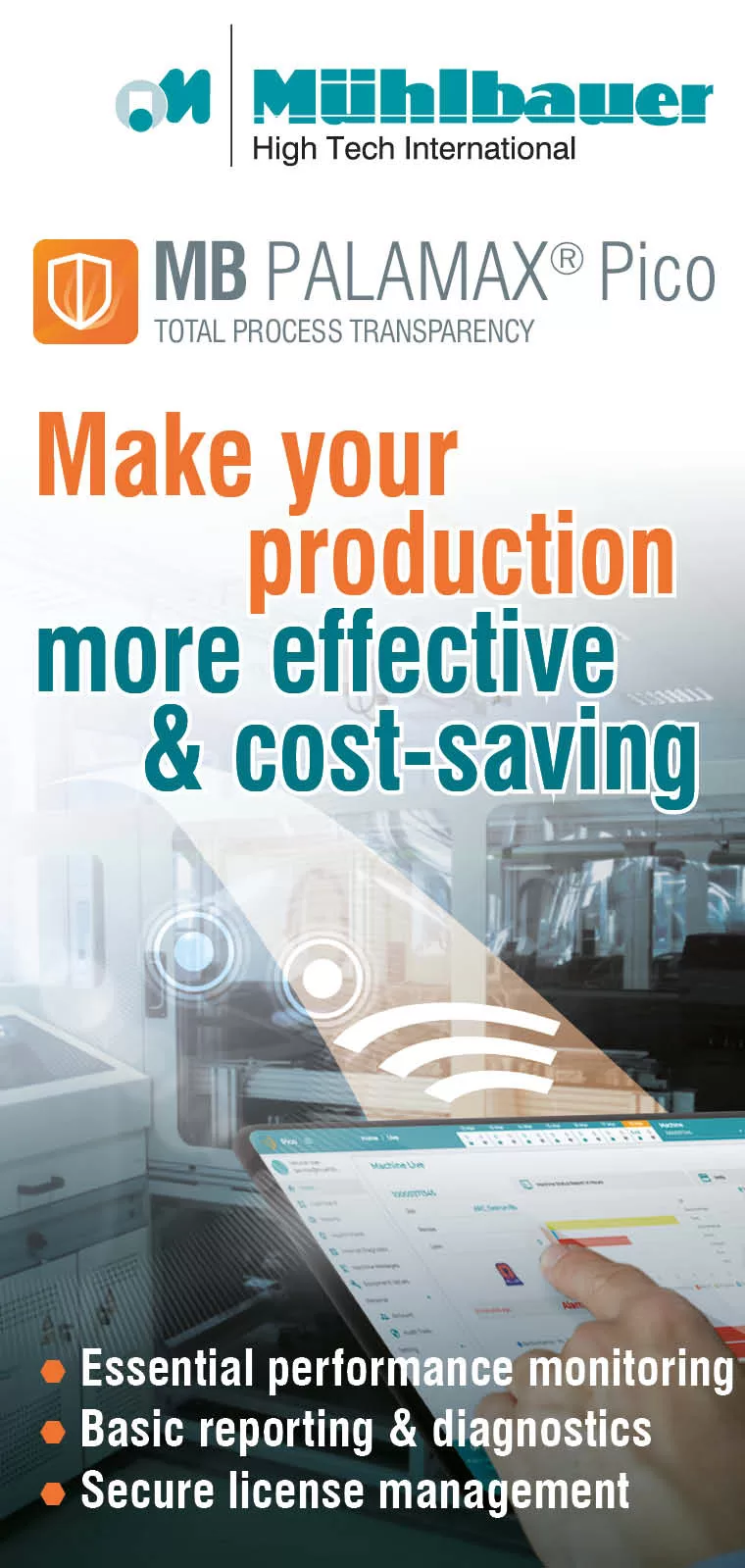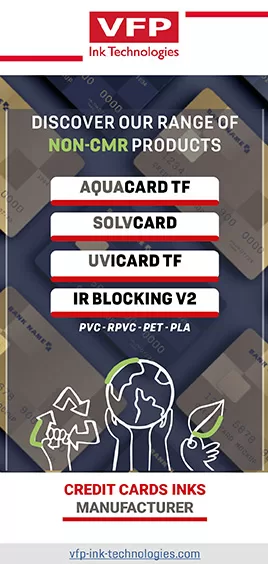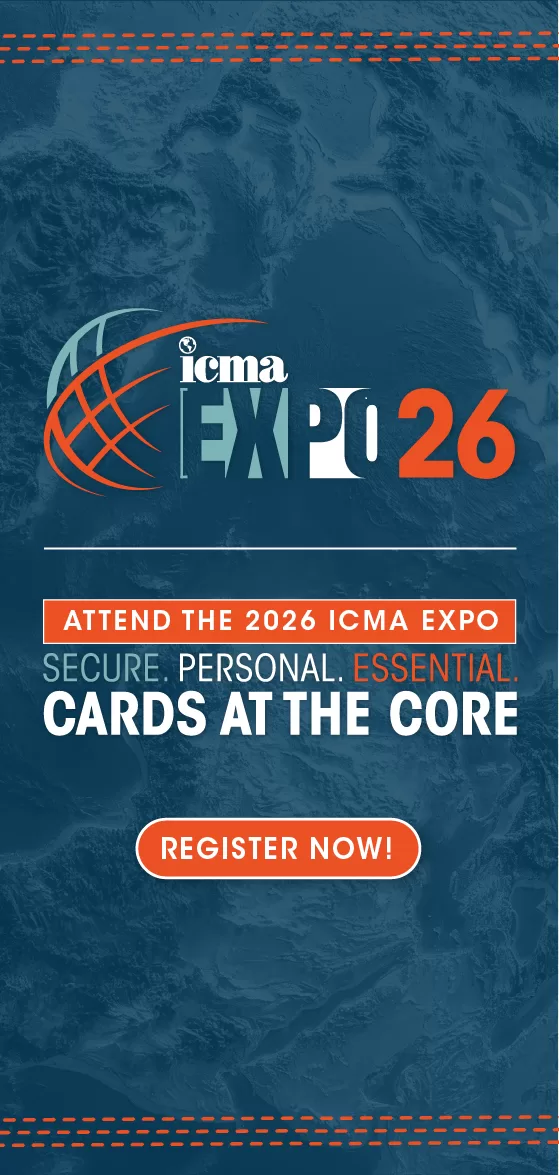
by Jennifer Kohlhepp | CM Magazine Featured
The Road to Contactless
 Mapping the journey from charge plates to payment objects—a market ready for change
Mapping the journey from charge plates to payment objects—a market ready for change
Although late to the game and despite some formidable challenges, the U.S. payment ecosystem, including issuers, processors and merchants, is preparing to support contactless as a dominant payment methodology. Retailer readiness is a key component in the move towards a new way to pay. Fortunately, according to A.T. Kearney, 70% of U.S. retailers already have point-of-sale (POS) terminals capable of accepting contactless payments, and more than 95% of new POS terminals shipped are contactless-enabled.(1) According to Visa, 78 of its top 100 merchants by transaction volume already offer tap to pay.(2) In this CPI Card Group® (CPI) white paper, we will navigate this changing landscape; looking at where we’ve been and where we are going next. We’ll discuss what is driving the contactless revolution, the opportunities for consumers, issuers and merchants and considerations and key steps to implementing dual interface cards (EMV® contact and contactless), an important transitional step on the road to contactless.
Years in the making, the U.S. market is finally ready for contactless payments.
Abstract
Card-based payment methods have evolved significantly over time—from the introduction of metal charge plates in the 19th century, to the development of paper charge cards and, eventually, plastic credit cards in the mid-20th century and plastic debit cards in the late 20th century. Technology progressed quickly from IBM®’s development of the magnetic stripe in 1960. This innovation paved the road for the introduction of EMV chip-and-pin in Europe in 1994, and more recently, EMV chip technology in the United States with the payment brands’ counterfeit fraud liability shift in 2015. The past decade spearheaded a revolution in payment methods and form factors, from digital wallets like Apple Pay®, Samsung Pay and Google Pay™, to contactless wearables and payment objects.
Card-based payment methods in the rearview mirror—where we’ve been
Outside the United States, more than 40% of in-store Visa transactions occur with a tap,(3) with Europe and Canada leading the way. For instance, contactless payments were introduced in the United Kingdom in 2007. That head start has driven public acceptance, and as of June 2017, a record 34% of UK card payments were conducted via contactless.(4) Two-thirds of Britons have used a contactless card to make at least one payment.(5) Younger generations eagerly embrace the contactless revolution; 76% of UK millennials made a purchase with their contactless card in 2017, up 11 percentage points from 2016.(6)
Other countries are seeing similar results. In Canada, nearly 70% of transactions under $50 occur with a tap.(7) Four out of five merchant terminals in Costa Rica are contactless-enabled.(8) The United States has trailed in the contactless payment trend, with an estimated 3% of cards having contactless capabilities, compared with 64% in the UK and 96% in South Korea.(9) However, U.S. issuers are catching on, and Visa expects more than 100 million Visa contactless cards to be issued in the United States by the end of 2019.(10) Many merchants are poised to accept contactless payments as well, having converted to EMV-enabled POS terminals, which are set up to accept contactless payments using the RF field generated by the terminal.
What is driving the contactless revolution?
Several major trends are driving the adoption of contactless payments:
- Changing consumer behaviors: The ubiquity of the “on the go” lifestyle, particularly among younger consumers, is changing how people prefer to pay. CPI Card Group finds that 21% of millennials prefer to use a mobile app like Venmo®, Zelle® or Apple Pay over other forms of payment.(11) Companies are accommodating this generation’s preferences by offering ticketless concerts and events, enabling greater speed and convenience. Attendees don’t need to carry wallets or separate forms of payment beyond a preloaded wristband. Juniper predicts one in four tickets issued will be contactless by 2023.(12) Tapping is appealing across all generations. CPI found that 72% of respondents liked the idea of tapping their cards, and 65% liked the idea of tapping an “object” to pay.(13)
- Fast casual restaurants embrace mobile apps: The fast-casual restaurant sector is one area driving the mobile and contactless payment revolution, primarily as a way to speed up the payment process and increase table turnover rates. Tap-and-go was thought to have limited application at sit-down service restaurants, as customers resist handing their smartphones to their server. Fast-casual chains like Applebee’s® and Buffalo Wild Wings® have seen success with tableside contactless payment terminals. Fast-casual chain Applebee’s installed contactless payment tablets at every table in late 2013, and other restaurants quickly followed suit.(14) According to research by Maru/Blue on behalf of TouchBistro®, 18% of full-service restaurants accept all three major digital wallets (Apple Pay, Samsung Pay and Google Pay).(15)
- Mass-transit presents a massive opportunity: Transport for London revolutionized the public transportation payment ecosystem when it introduced a system-wide contactless platform in December 2012. As of April 2018, the system facilitates approximately 17 million journeys a week across London. Roughly half of all Tube and rail pay-as-you-go journeys, and around 45% of all tram and bus pay-as-you-go journeys, are made using contactless payment cards or mobile devices.(16) In the United States, the Chicago Transit Authority introduced its own Ventra® contactless payment system in 2013. The system accommodates multiple payment options, including a proprietary contactless card, paper contactless-enabled one-time use tickets, and a mobile app.(17) The CTA serves 1.6 million rides on an average weekday.(18)
Contactless offers issuers numerous benefits.
Contactless transactions are fast: Merchants and issuers benefit from faster transaction speed during peak periods, resulting in higher transaction volumes. EMV contact transactions can take up to 30 seconds, whereas a contactless card transaction can be completed in just 13 to 15 seconds.(19) Customers who would otherwise rummage through their wallet for exact change can wave their dual interface card, payment object or mobile device over a reader, and be on their way. Merchants also benefit from incremental spend, as their customers are not limited to cash on hand. The enhanced convenience factor of contactless cards has proven to be effective in converting cash to card-based payments.(20)
Cardholders are eager to try new formats: Today’s cardholders are curious about trying new contactless payment methods and form factors. For instance, according to a CPI research study, cardholders are very interested in using payment object technology at music or sports venues: 81% like the idea of using a band or fob to house their tickets, and 81% also like the idea of using such objects to make onsite purchases at the venue.(21)
Rise to top-of-wallet status: The greater convenience of contactless cards and payments benefits issuers through increased cardholder loyalty, lower attrition rates and enhanced top-of-wallet status.(22) Top of wallet status, higher transaction volumes and average spend help to minimize opportunity costs associated with customer attrition and lost wallet share.(23) The time has come for issuers to consider offering contactless to their existing cardholder base.
First, U.S. merchant terminals aren’t yet fully upgraded to accept contactless transactions. Although 60-70% are already equipped with near field communication capabilities, in many cases the functionality has not been activated. U.S. issuers and processors must work together to offer contactless options to their cardholders. The first mile is the most critical to ensuring the success of a new contactless program. Issuers should establish clear goals and parameters, and then vet their processing partners to determine their preparedness. CPI recommends that issuers ask their processor a few questions before getting started, such as which brands and card types will be supported, and their ability to support dual interface, the latest cryptograms and magnetic stripe.
Once the issuer is comfortable with its processor’s capabilities, the project can begin. But it’s important to follow a project checklist to ensure all critical steps are followed, including the proper and correct use of profiles, RSA certificates, letters of delegation and verification. Once the program formalities have been settled, test keys can be provided for the new cards with EMV chip and antenna, and production keys obtained. Implementing a contactless card program is complex and requires a significant amount of coordination between the issuing financial institution and its processing partner.
Conclusions
The road to contactless payments has been long, but consumer expectations and innovative technology make this one of the most exciting options available to cardholders, merchants and issuers today. A convenient option issuers can introduce to cardholders is dual interface cards, combining EMV chip and contactless antenna for insert and tap or wave capability within a single card.
About the Author: CPI Card Group® is a payment technology company that offers dual interface cards for credit and debit programs and can add applications to control automatic fare collection and access, as well as applications to track loyalty and gaming points for lottery applications. CPI can also provide payment object technology, allowing issuers to turn everyday objects into wearable or non-wearable contactless payment devices. This versatility allows issuers to offer open- or closed-loop payment capability in a variety of form factors, including wristbands, key fobs, drink containers, hats and more. With the benefits of speed and convenience, contactless offers a “must have” value proposition to consumers and issuers. The contactless trend is here and it’s a prime time for issuers to support the transition by offering dual interface cards. To learn more, visit cpicardgroup.com.
Sources
1 Why US Banks Should Make Contactless Cards an Immediate Priority, A.T. Kearney, p. 7. © 2018, A.T. Kearny, Inc. All rights reserved. https://info.atkearney.com/24/2185/uploads/why-us-banks-should-make-contactless-cards-an-immediate-priority.pdf?intIa
ContactId=8590813391&intExternalSystemId=1&strExternalSystemType=Interaction+5.6
2 “Contactless Payments: Global Highlights,” infographic, Visa. ©2019 Visa. https://usa.visa.com/dam/VCOM/global/pay-with-visa/documents/vsa215-02-contactless.pdf
3 Ibid.
4 “The contactless revolution ten years on: two-thirds of Brits now tap to pay,” press release, Visa Europe, September 1, 2017. https://www.visa.co.uk/about-visa/newsroom/press-releases.2130476.html
5 Ibid.
6 Ibid.
7 “Contactless Payments: Global Highlights,” infographic, Visa. ©2019 Visa. All rights reserved. https://usa.visa.com/dam/VCOM/global/pay-with-visa/documents/vsa215-02-contactless.pdf
8 Ibid.
9 Why US Banks Should Make Contactless Cards an Immediate Priority, A.T. Kearney, p. 3. © 2018, Figure 1, A.T. Kearny, Inc. All rights reserved. https://info.atkearney.com/24/2185/uploads/why-us-banks-should-make-contactless-cards-an-immediate-priority.pdf?intIa
ContactId=8590813391&intExternalSystemId=1&strExternalSystemType=Interaction+5.6
10 Visa. Q4 2018 Earnings Call, October 24, 2018, from Visa investor relations website, https://investor.visa.com/events-calendar/Event-Details/2018/Q4-2018-Visa-Inc-Earnings-Conference-Call/default.aspx, accessed September 2, 2019.
11 CPI Card Group. “Consumer Insights Study,” conducted by an independent research firm, Schor Insights and Strategy, among 529 debit and credit card users between 18 and 65 years of age. November 1-2, 2018.
12 “Juniper Research: Contactless Ticketing Users to Reach 468 Million by 2023, as Consumers Embrace Frictionless Ticketing,” press release,
February 25, 2019. https://www.juniperresearch.com/press/press-releases/contactless-ticketing-users-reach-468-million-2023
13 CPI Card Group. “Consumer Insights Study,” conducted by an independent research firm, Schor Insights and Strategy, among 529 debit
and credit card users between 18 and 65 years of age. November 1-2, 2018.
14 “Applebee’s to put 100,000 NFC tablets on dining tables,” by Rian Boden, NFC World, December 4, 2013.
https://www.nfcworld.com/2013/12/04/327186/applebees-put-100000-nfc-tablets-dining-tables/
15 The State of Full-Service Restaurants 2019, TouchBistro, p. 11.
https://restaurantsuccess.touchbistro.com/restaurant-guides/state-of-full-service-restaurants-in-2019-ungated
16 “Half of all Tube and rail pay as you go journeys across London using contactless,” Transport for London, April 24, 2018. https://tfl.gov.uk/info-for/media/press-releases/2018/april/half-of-all-tube-and-rail-pay-as-you-go-journeys-across-london-using-contactless
17 “From transit to transactions, Ventra® does it all,” Ventra. https://www.ventrachicago.com/howitworks/
18 “Facts at a Glance,” Chicago Transit Authority, Fall 2017. https://www.transitchicago.com/facts/
19 “Tap and Pay Around the World, Rising Adoption of Contactless Cards,” Nimdzi, 2019. https://www.nimdzi.com/tap-and-pay-with-contactless-cards/
20 “Contactless payments are a fast, easy and secure way to pay,” Visa. 2019 Visa. All rights reserved. https://usa.visa.com/partner-with-us/payment-technology/contactless-payments/contactless-for-issuers.html
21 CPI Card Group. “Consumer Insights Study,” conducted by an independent research firm, Schor Insights and Strategy, among 529 debit
and credit card users between 18 and 65 years of age. November 1-2, 2018.
22 “Contactless payments are a fast, easy and secure way to pay,” Visa. ©2019 Visa. All rights reserved. https://usa.visa.com/partner-with-us/payment-technology/contactless-payments/contactless-for-issuers.html
23 “Just Tap & Go®,” Mastercard®, accessed from Web, May 6, 2019. https://www.mastercard.us/en-us/issuers/products-and-solutions/grow-manage-your-business/payment-innovations/contactless.html

